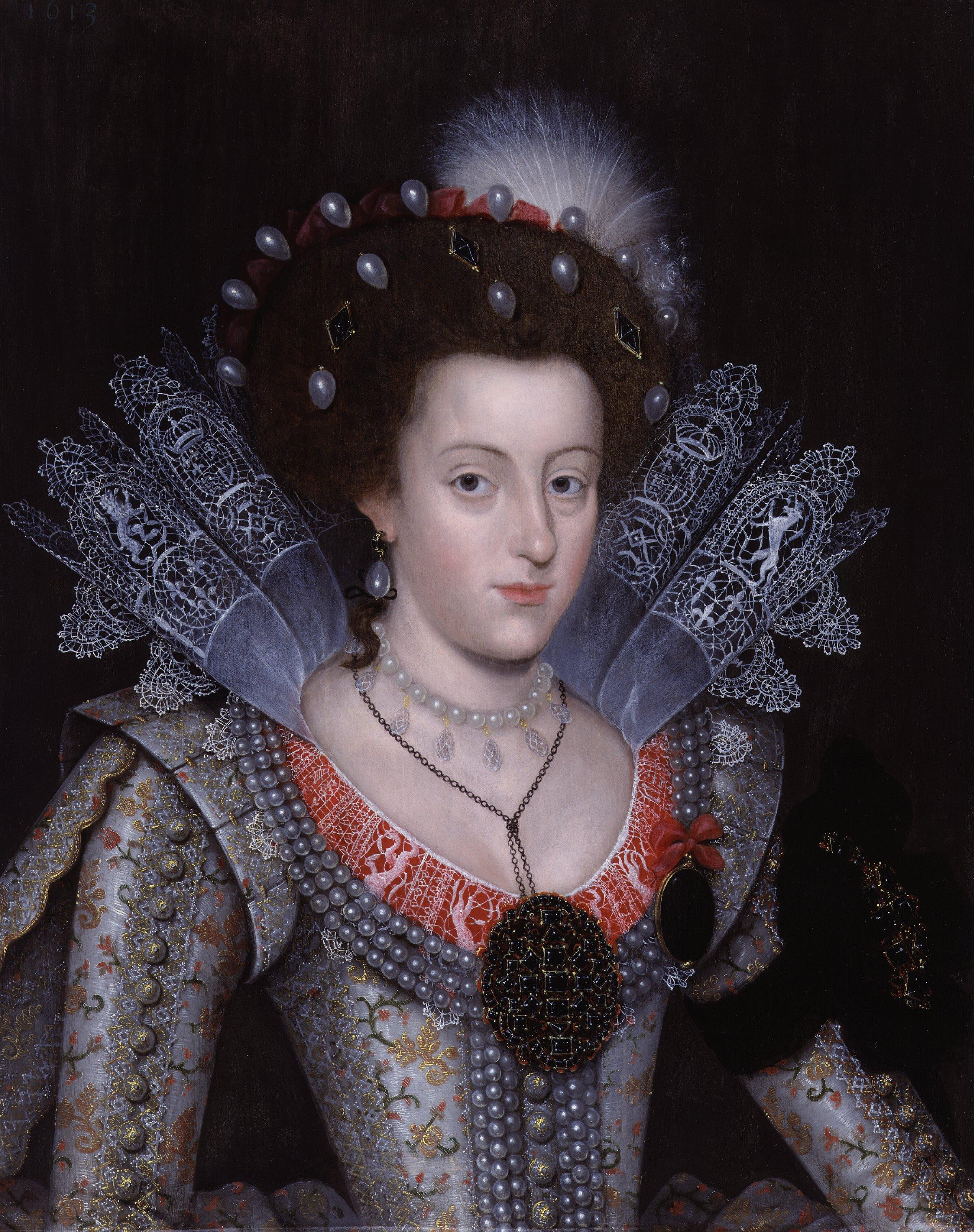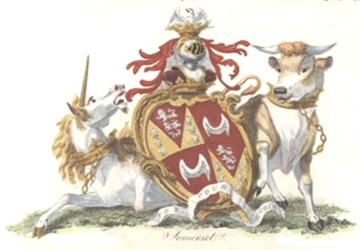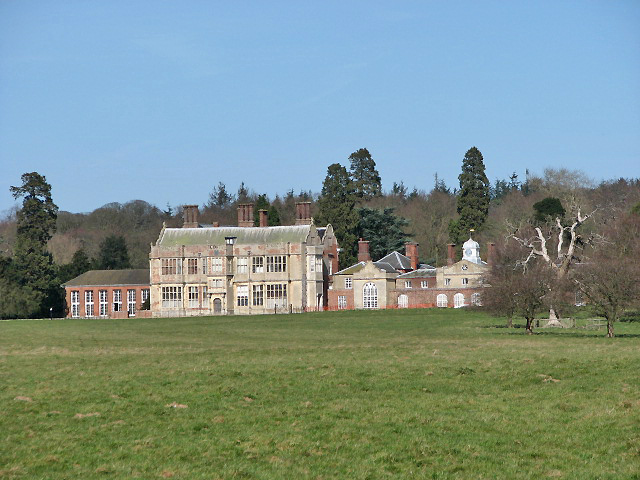|
Orchard Wyndham
Orchard Wyndham is a historic manor near Williton in Somerset, centred on the synonymous grade I listed manor house of Orchard Wyndham that was situated historically in the parish of Watchet and about two miles south of the parish church of St Decuman's, Watchet. Parts of the manor house are medieval. It has been owned for more than 700 years by the prominent Wyndham family, who continue there as of 2015. History There is evidence of occupation of the site from Roman and Saxon times. The estate was originally called "Orchard", possibly a corruption of the Saxon family name "De Horcherd". In the 12th century the family of Elfric de Orchard held another nearby manor in Somerset, now called Orchard Portman which was inherited by the Portman family. In 1448 the estate passed into the hands of the Sydenham family of nearby Combe Sydenham, and was thenceforth known as Orchard Sydenham. The Sydenham family originated at the manor of Sydenham near Bridgwater, Somerset. Elizab ... [...More Info...] [...Related Items...] OR: [Wikipedia] [Google] [Baidu] |
Bridgwater
Bridgwater is a large historic market town and civil parish in Somerset, England. Its population currently stands at around 41,276 as of 2022. Bridgwater is at the edge of the Somerset Levels, in level and well-wooded country. The town lies along both sides of the River Parrett; it has been a major inland port and trading centre since the industrial revolution. Most of its industrial bases still stand today. Its larger neighbour, Taunton, is linked to Bridgwater via a canal, the M5 motorway and the Great Western Railway, GWR railway line. Historically, the town had a politically radical tendency. The Battle of Sedgemoor, where the Monmouth Rebellion was finally crushed in 1685, was fought nearby. Notable buildings include the Church of St Mary, Bridgwater, Church of St Mary and Blake Museum, which is a largely restored house in Blake Street and was the birthplace of Robert Blake (admiral), Admiral Blake in 1598. The town has an arts centre and plays host to the annual West Countr ... [...More Info...] [...Related Items...] OR: [Wikipedia] [Google] [Baidu] |
Member Of Parliament
A member of parliament (MP) is the representative in parliament of the people who live in their electoral district. In many countries with Bicameralism, bicameral parliaments, this term refers only to members of the lower house since upper house members often have a different title. The terms Member of Congress, congressman/congresswoman or Deputy (legislator), deputy are equivalent terms used in other jurisdictions. The term parliamentarian (other), parliamentarian is also sometimes used for members of parliament, but this may also be used to refer to unelected government officials with specific roles in a parliament and other expert advisers on parliamentary procedure such as the Senate Parliamentarian in the United States. The term is also used to the characteristic of performing the duties of a member of a legislature, for example: "The two party leaders often disagreed on issues, but both were excellent parliamentarians and cooperated to get many good things done." ... [...More Info...] [...Related Items...] OR: [Wikipedia] [Google] [Baidu] |
Sir William Wyndham, 1st Baronet
Sir William Wyndham, 1st Baronet (''ca.'' 1632 – 29 October 1683) of Orchard Wyndham, Somerset, was Member of Parliament for Somerset in 1656 and twice for Taunton in 1659 and 1660. He was Sheriff of Somerset in 1679–80. Origins William Wyndham was the eldest son of John Wyndham (d. 1649) and grandson of Sir John Wyndham of Orchard Wyndham (a descendant of Lady Margaret Howard, a younger daughter of the 1st Duke of Norfolk), by his wife Catherine Hopton, daughter of Robert Hopton of Witham, Somerset. Career He succeeded his father in 1649 when a student of Lincoln's Inn The Honourable Society of Lincoln's Inn is one of the four Inns of Court in London to which barristers of England and Wales belong and where they are called to the Bar. (The other three are Middle Temple, Inner Temple and Gray's Inn.) Lincoln ... and travelled abroad from 1650 to 1653. In 1656 Wyndham was elected Member of Parliament for Somerset in the Second Protectorate Parliament. He ... [...More Info...] [...Related Items...] OR: [Wikipedia] [Google] [Baidu] |
Ralph Hopton, 1st Baron Hopton
Ralph Hopton, 1st Baron Hopton, (159628 September 1652), was an English politician, soldier and landowner. During the 1642 to 1646 First English Civil War, he served as Royalist commander in the West Country, and was made Baron Hopton of Stratton in 1643. Along with his close friend Sir Edward Hyde (later the Earl of Clarendon), he was made advisor to the future Charles II, when he was appointed to rule the West in early 1644. He commanded the last significant Royalist field army, and followed Charles into exile after surrendering in March 1646. A devout supporter of the Church of England, his personal opposition to Catholicism and Presbyterianism meant he took no further part in the 1638 to 1651 Wars of the Three Kingdoms. He died in Bruges in 1652. In his stated account of the war, Clarendon described him as 'a man of great honour, integrity, and piety, of great courage and industry, and an excellent officer for any command but the supreme, to which he was not equal'. Li ... [...More Info...] [...Related Items...] OR: [Wikipedia] [Google] [Baidu] |
Witham Friary
Witham Friary is a small English village and civil parish located between the towns of Frome and Bruton in the county of Somerset. It is in the Cranborne Chase and West Wiltshire Downs Area of Outstanding Natural Beauty and the ancient Forest of Selwood. History The parish was part of the hundred of Frome. The village takes its name from a technically confused reference (a friary is generally a house of Franciscans and in any case not of Carthusians) to the Witham Charterhouse, a Carthusian Priory founded in 1182 by Henry II, which had peripheral settlements including one at Charterhouse and possibly another at Green Ore. It is reputed to be the first Carthusian house in England. One of only nine Carthusian Houses in the country, the priory did not survive the Dissolution of the Monasteries. At the Dissolution it was worth £227; the equivalent of £52,000 today (2006). Excavations in 1921 revealed buttressed wall foundations and building rubble including glazed roof an ... [...More Info...] [...Related Items...] OR: [Wikipedia] [Google] [Baidu] |
Robert Hopton
Robert Hopton (c.1575-1638) was an English landowner and politician who sat in the House of Commons in two parliaments between 1604 and 1622. Hopton was the eldest son of Sir Arthur Hopton of Witham Friary, Somerset and his wife Rachel Hall, daughter of Edmund Hall of Greatford, Lincolnshire. In 1604, he was elected Member of Parliament for Shaftesbury. Between about 1609 and 1617 he was engaged in the construction of Evercreech House. He was Sheriff of Somerset for the year 1618 to 1619. In 1621 he was elected MP for Somerset.W.L. Rutton, 'Pedigree of Hopton of Suffolk and Somerset', in J.J. Howard (ed.), ''Miscellanea Genealogica et Heraldica'', 3rd Series Vol. III (Mitchell and Hughes, London 1900)pp. 9-12 and notepp. 81-86(Internet Archive). Family By his wife Jane Kemeys (daughter and heir of Rowland Keymis of the Vaudrey, or Faerdref, Monmouthshire), Robert Hopton had several children: * Ralph Hopton, 1st Baron Hopton, who married Elizabeth (died 1646), daughter of Arthu ... [...More Info...] [...Related Items...] OR: [Wikipedia] [Google] [Baidu] |
Wadham College
Wadham College () is one of the constituent colleges of the University of Oxford in the United Kingdom. It is located in the centre of Oxford, at the intersection of Broad Street and Parks Road. Wadham College was founded in 1610 by Dorothy Wadham, according to the will of her late husband Nicholas Wadham, a member of an ancient Devon and Somerset family. The central buildings, a notable example of Jacobean architecture, were designed by the architect William Arnold and erected between 1610 and 1613. They include a large and ornate Hall. Adjacent to the central buildings are the Wadham Gardens. Amongst Wadham's most famous alumni is Sir Christopher Wren. Wren was one of a brilliant group of experimental scientists at Oxford in the 1650s, the Oxford Philosophical Club, which included Robert Boyle and Robert Hooke. This group held regular meetings at Wadham College under the guidance of the warden, John Wilkins, and the group formed the nucleus which went on to found the Ro ... [...More Info...] [...Related Items...] OR: [Wikipedia] [Google] [Baidu] |
Dorothy Wadham
Dorothy Wadham (; ''née'' Petre) (1534/1535 – 16 May 1618) was the foundress of Wadham College, Oxford. She has the distinction of being the first woman who was not a member of the Royal Family or titled aristocracy to found a college at Oxford or Cambridge. Her husband was Nicholas Wadham (1531-1609) of Merryfield in the parish of Ilton, Somerset and of Edge in the parish of Branscombe, Devon. Origins Dorothy was the second and eldest surviving child of the very wealthy Sir William Petre (c.1505-1572), Secretary of State to four successive Tudor monarchs (namely Kings Henry VIII, Edward VI and Queens Mary I and Elizabeth I), who had acquired much property following the Dissolution of the Monasteries. Her mother was Gertrude Tyrrell, daughter of Sir John Tyrrell. Her date of birth as 1535 may be deduced from one of her two portraits in Wadham College, which gives her age as sixty in 1595. Part of the Petre inheritance received by Dorothy came from grants made by Queen M ... [...More Info...] [...Related Items...] OR: [Wikipedia] [Google] [Baidu] |
Nicholas Wadham (1531–1609)
Nicholas Wadham () (1531–1609) of Merryfield in the parish of Ilton, Somerset, and Edge in the parish of Branscombe, Devon, was a posthumous co-founder of Wadham College, Oxford, with his wife Dorothy Wadham who, outliving him, saw the project through to completion in her late old age. He was Sheriff of Somerset in 1585. Origins Nicholas Wadham was probably born at Merryfield, a moated and fortified manor house, built around 1400 by his ancestor Sir John Wadham of Edge, a Justice of the Common Pleas in the reign of King Richard II. He was the only surviving son of John Wadham (d. 1578) of Merryfield and Edge, Sheriff of Somerset and Dorset in 1556, by his wife Joan Tregarthin (d. 1583), daughter and co-heiress of John Tregarthin of Cornwall, and widow of John Kelloway of Cullompton, Devon. Wadham's grandfather, Sir Nicholas Wadham (1472–1542), was a member of parliament in the English Reformation Parliament of 1529, Sheriff of Devon, Sheriff of Somerset and Dorse ... [...More Info...] [...Related Items...] OR: [Wikipedia] [Google] [Baidu] |
John Wyndham (1558–1645)
Sir John Wyndham (1558 – 1 April 1645), JP, of Orchard Wyndham in the parish of Watchet in Somerset, was an English landowner who played an important role in the establishment of defence organisation in the West Country against the threat of Spanish invasion. Origins He was born at Orchard Wyndham, the only child and heir of Sir John Wyndham (d. 1572) of Orchard Wyndham, by his wife Florence Wadham (1538–1597), a co-heiress of her brother Nicholas Wadham (1531/2–1609), of Merryfield, Ilton, in Somerset and of Edge, Branscombe, in Devon, who with his wife Dorothy Petre (1534/5–1618), eldest daughter of Sir William Petre, principal secretary to King Henry VIII, founded Wadham College, Oxford. In memory of his parents, Sir John erected a pair of almost life-size monumental brasses in St Decuman's Church, Watchet, and also erected an almost identical pair (considered the finest of their style in England), also set into Purbeck marble, in memory of his uncle Nic ... [...More Info...] [...Related Items...] OR: [Wikipedia] [Google] [Baidu] |
Felbrigg Hall
Felbrigg Hall is a 17th-century English country house near the village of that name in Norfolk. Part of a National Trust property, the unaltered 17th-century house is noted for its Jacobean architecture and fine Georgian interior. Outside is a walled garden, an orangery and orchards. The house and grounds were bequeathed to the National Trust in 1969 by Robert Ketton-Cremer. The hall is Grade I on the National Heritage List for England. Most of the grounds are part of Felbrigg Woods, a Site of Special Scientific Interest. History The estate originated with the Felbrigg family. It passed to John Wyndham (died 1475) and remained in that family for centuries. Thomas Wyndham (died 1522) was a councillor to King Henry VIII. Later, residents included John Wyndham (1558–1645) who was probably the builder of Felbrigg Hall. The last Wyndham or Windham of Felbrigg was William Wyndham (died 1810). Much land had been added to the medieval estate in the 17th and 18th centuries. ... [...More Info...] [...Related Items...] OR: [Wikipedia] [Google] [Baidu] |








